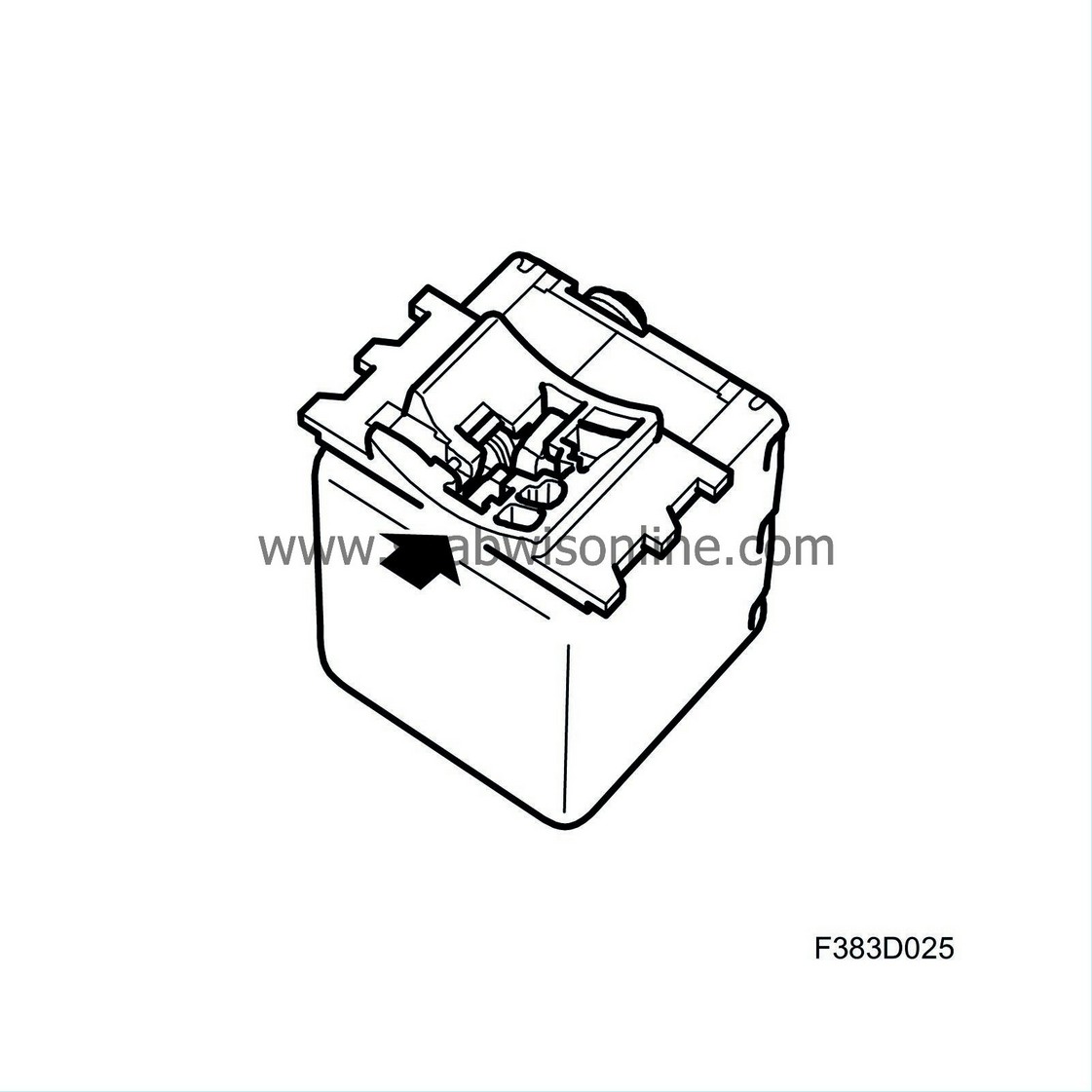Steering column lock, detailed description
| Steering column lock, detailed description |
| Locking the steering column |
After turning the key to OFF, the voltage on +15 to the column integration module (CIM) will disappear. CIM will then check that the speed is below 5 km/h. For this purpose, there is a direct lead from the TCS control module or the ESP control module since there is no P-bus communication in key position OFF. The TCS control module or ESP control module can read the wheel sensors and transmit the speed signal as it has a separate supply with +X from the rear right wheel and the signal is transmitted in the form of a square wave that varies in frequency with the speed of the car.
Beside the speed having to be below 5 km/h, the gear selector on cars with automatic transmission must be in position P (I-bus from the gear selector control module).
Once these conditions have been met, CIM will send signals to the ignition switch (ISM) via the communication cable to release the key, whereby the key can be turned to LOCK and then removed. At this stage, the voltage on +B (key in) to CIM will disappear. CIM will then energize the trigger lead to the steering column lock (SCL) pin 3 and energize SCL internally.
A code exchange now takes place to ensure that SCL and CIM belong together. If this code exchange is approved, CIM will send a message to ISM via the communication cable to release the locking pin. The locking pin is secured using SCL and not ISM, so ISM will only check that there is no battery voltage on +15, +X and +B, i.e. the key has really been removed. After this, ISM will apply battery voltage to SCL pin 6, which signals "Release locking pin".
The CIM checks to see whether the "Locking pin is unlocked and secured" signal changes from YES to NO. This is monitored in two ways: via information on the communication cable directly from the SCL, or via the communication cable from the ISM which reads the hall sensor value on the direct cable from SCL pin 5.


| Unlocking the steering column |
Inserting the key closes a contact, whereby +B is energized. This initiates two parallel activities:
| 1. |
CIM is woken up via a direct lead for +B from ISM. CIM then energizes the trigger lead to SCL pin 3, which is the condition for energizing SCL internally.
|
|
| 2. |
ISM wakes up, reads the key transponder code and sends the code to CIM on the communication cable.
|
|
A code exchange then takes place to ensure that SCL and CIM belong together. If this code exchange and the key's transponder code are approved, CIM transmits the command "Remove locking p in from steering column". The CIM checks to see whether the "Locking pin is unlocked and secured" signal changes from NO to YES.
Once these conditions have been met, CIM will send signals to the ISM via the communication cable to release the key, whereby the key can be turned past LOCK to OFF and then to ON and ST.
If the car has been parked so that the steering column is straining hard on the lock bolt, it may not be possible to unlock the steering column. CIM will then send a message on the bus so that ICM can instruct the driver via SID to remove the key, turn the steering wheel and insert the key again.
| Note | ||
|
When the steering lock is engaged or released, a tone is heard from the mechanical components. This is however totally normal. |


